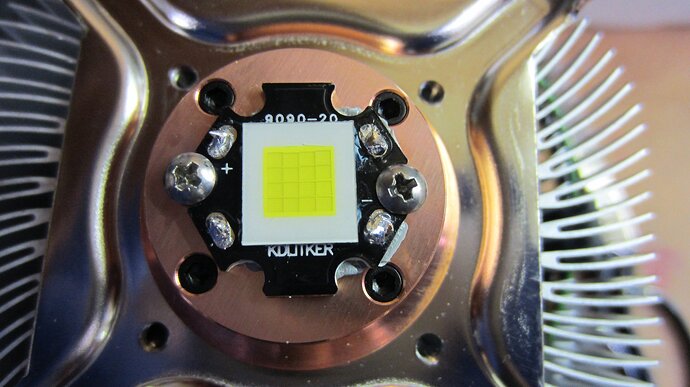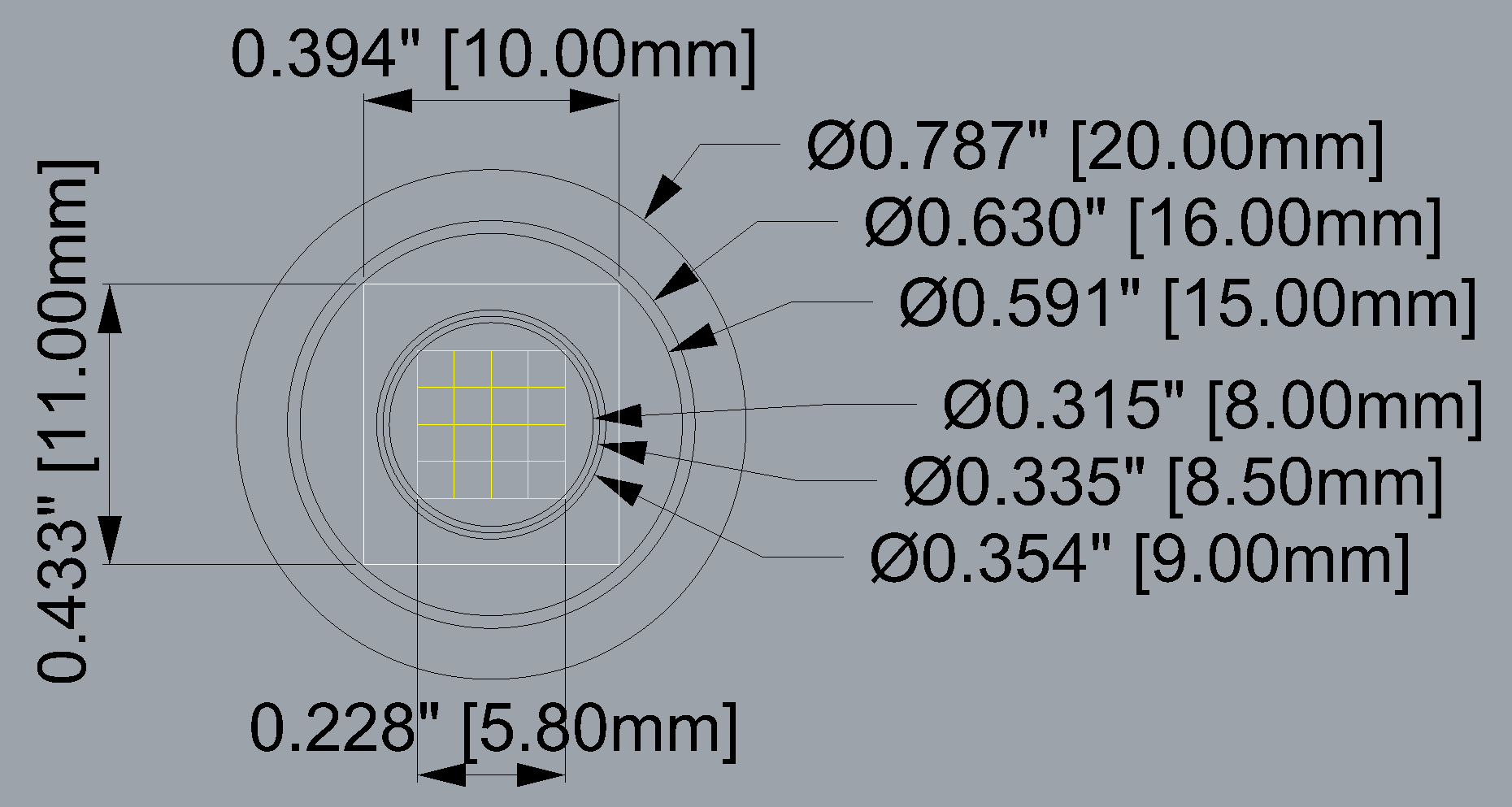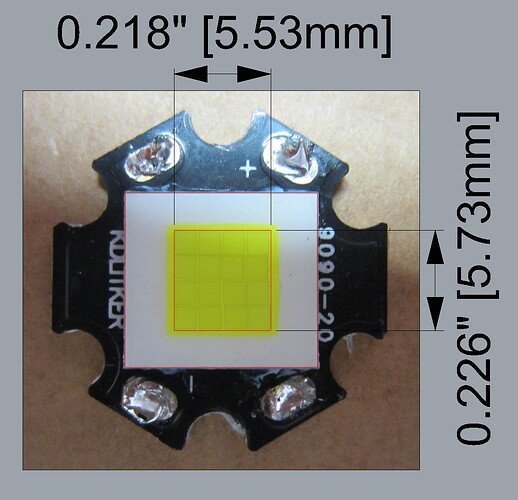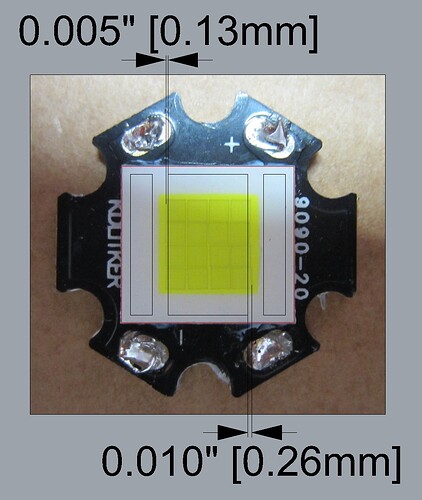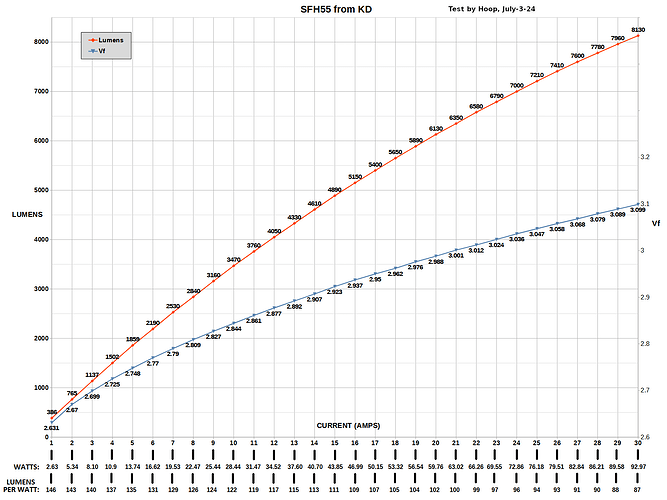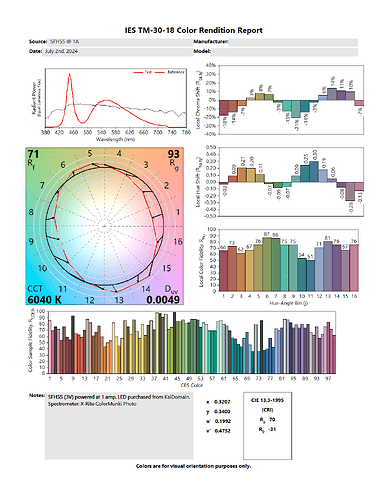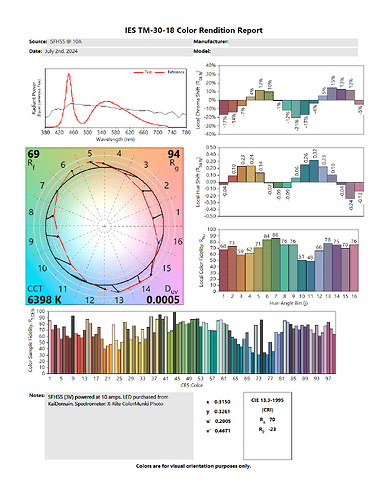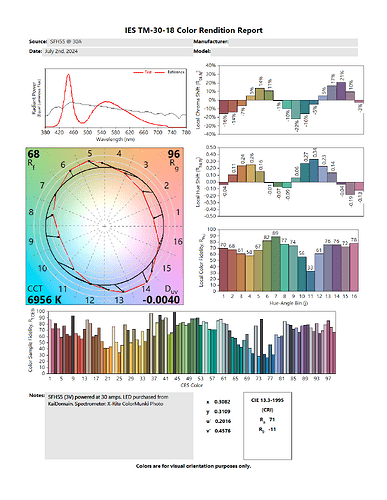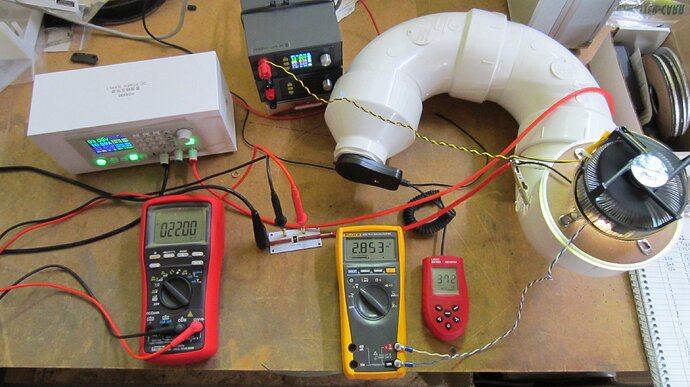Here’s some SFH55 testing data I put together for y’all.
LED purchased from KaiDomain. [product page]
Listed Product specs:
SFH55
-9090 SMD package
-White 6500K
-3V
-50A max current
-Reflowed by KD onto 20mm (D) x 1.5mm thick copper DTP MCPCB
CRI not listed, but tested at 70 CRI.
OTHER INFORMATION:
According to this table posted in the “SFN55.2, SFQ55, SFN60, SFQ60, SFS80 and SFH55 LED info” thread, the SFH55 is listed as having a continuous rated current of 25 Amps.
DIMENSIONS:
This LED has 16 dies arranged in a square 4x4 configuration.
With calipers I measure the ceramic base to be 10.0mm x 11.0mm
The smallest circle that the entire LED package will fit inside is 15mm.
The vertex opening of a reflector needs to be 8.5mm in order not to block any of the output. 9mm offers plenty of clearance.
Measuring a photo of the array in CAD, it is approximately 5.53mm x 5.73mm, which is an area of 31.69 sq mm.
The LED array is ever so slightly larger than the recommended solder footprint specified in the SBT90.2 datasheet, which common 9090 MCPCBs may be based on:
PERFORMANCE GRAPH, UP TO 30A:
TEST PROCEDURE NOTES:
The LED was mounted to a fan cooled heatsink. Refer to the end of this post for more details about my test setup.
The test was performed continuously, starting at low power and moving up to 30A. There is a small difference in output compared to the cold start tests.
The wires providing power to the LED were connected to all four pads on the MCPCB.
There is a difference in the output numbers at high currents if only two pads are used. The MCPCB traces are thin and 30A+ is a lot of current.
COLD START TESTS:
These are instant measurements taken with the heatsink at ambient temperature (25C) for the sake of comparison.
10A: 2.847V, 3470 LM (no change relative to the above graph)
20A: 2.998V, 6180 LM (+50 lumens)
30A: 3.115V, 8360 LM (+230 lumens)
DIRECT DRIVE TEST:
-Cell used: Molicel P45B @ 4.16V resting voltage
-Cold start, instant reading.
-Current measured with Brymen BM037 clamp meter.
-Power wires connected to all four MCPCB pads.
Result:
49A @ 3.33V
11,380 Lumens
163 W, 70 lm/W
LOW CURRENT TESTS:
| Current | Voltage | Watts | Lumens | lm/W |
|---|---|---|---|---|
| 10 mA | 2.493 V | 0.0249 | 3 | 120 |
| 50 mA | 2.531 V | 0.1266 | 19 | 150 |
| 100 mA | 2.548 V | 0.2548 | 36 | 141 |
| 250 mA | 2.577 V | 0.6443 | 96 | 149 |
| 380 mA | 2.591 V | 0.9846 | 145 | 147 |
| 500 mA | 2.602 V | 1.3010 | 193 | 148 |
| 750 mA | 2.615 V | 1.9613 | 286 | 145 |
IES TM-30-18 Color Rendition Reports:
1 AMP:
10 AMPS:
30 AMPS:
TEST SETUP:
Ambient temperature: 25C
Heatsink: MCPCB affixed with screws onto INTEL D60188 - 001, Fan cooled aluminum CPU cooler with copper center core. Fan was operated at 13V.
Reflective tape was placed over the MCPCB to reduce absorption losses.
Thermal paste: Arctic MX-4
PSU: RIDEN RD6030
Current measurement: voltage drop measured over 40A rated shunt, .1% tolerance.
Current measurement meter: Brymen BM869s DMM
Voltage: measured at LED MCPCB pads with FLUKE 179
Lumen measurement: Texas Ace 4" Lumen Tube with HS1010A lux meter
Calibration: Maukka calibration lights
Spectrometer: xrite colormunki photo, sensor positioned ~1m above the LED source.
Software: Argyll CMS, Osram Color Calculator
